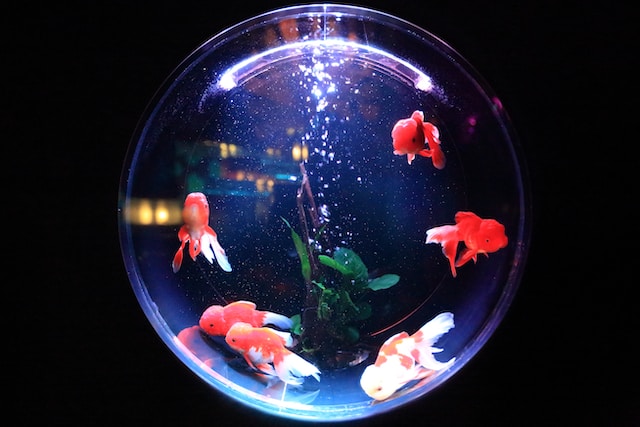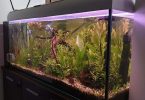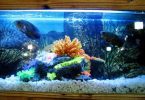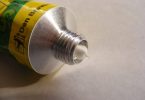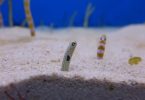Table of Contents
Bubbles in a fish tank can be a source of concern for many aquarium owners. While some bubbles are a natural byproduct of a healthy tank, others can indicate a problem that needs to be addressed. Understanding the different types of bubbles and what they mean is key to keeping your fish healthy and happy.
One common type of bubble in a fish tank is caused by oxygenation. As an air stone releases oxygen into the water, it can create small bubbles that rise to the surface.
These bubbles are generally harmless and can even be beneficial for your fish by increasing the oxygen levels in the water.
However, if the bubbles are excessive or are causing too much surface agitation, it can be a sign that the air pump needs to be adjusted or that the water temperature is too high.
Another type of bubble that can occur in a fish tank is caused by the buildup of gases in the water. This can be a more serious issue, as it can lead to gas bubble disease in fish.
Symptoms of gas bubble disease include bubbles on the skin or fins, difficulty swimming, and loss of appetite. If you notice these symptoms, it’s important to take action quickly to prevent further harm to your fish.
The Importance of Water Quality
Maintaining good water quality in a fish tank is crucial for the health and well-being of the fish. Poor water quality can lead to a range of problems, including stress, disease, and even death.
The quality of the water in a fish tank is determined by a number of factors, including temperature, pH, ammonia levels, and oxygen levels.
The Role of Bubbles in a Fish Tank
Bubbles play an important role in maintaining good water quality in a fish tank. They help to increase the oxygen levels in the water, which is essential for the fish to breathe.
Bubbles also help to circulate the water, which can prevent the buildup of harmful chemicals and waste products.
However, it is important to note that too many bubbles can be harmful to fish. If there are too many bubbles in the water, it can cause stress and discomfort for the fish.
Additionally, bubbles can create turbulence in the water, which can make it difficult for fish to swim and feed.
To ensure that bubbles are not causing harm to fish, it is important to monitor the number and size of bubbles in the tank.
A good rule of thumb is to have one bubble per second per gallon of water. It is also important to use an air pump that is appropriate for the size of the tank, as using an air pump that is too powerful can create too many bubbles.
In summary, bubbles play an important role in maintaining good water quality in a fish tank. However, it is important to monitor the number and size of bubbles to ensure that they are not causing harm to the fish.
The Negative Effects of Bubbles in a Fish Tank
Bubbles in a fish tank can have negative effects on the overall health and wellbeing of fish and other aquatic creatures.
This section will discuss the various ways in which bubbles can be detrimental to the aquatic environment in a fish tank.
Oxygen Depletion
One of the most significant negative effects of bubbles in a fish tank is the depletion of oxygen in the water. This happens because bubbles disrupt the surface tension of the water, which can reduce the amount of oxygen that is absorbed from the air.
This can be especially problematic in tanks that are overcrowded or have a high concentration of fish, as the fish will consume more oxygen than the water can provide.
In extreme cases, this can lead to oxygen starvation, which can be fatal for fish and other aquatic creatures.
Increased Water Agitation
Another negative effect of bubbles in a fish tank is increased water agitation. This can be harmful to fish and other aquatic creatures because it can create strong currents that can make it difficult for fish to swim and can dislodge plants and other decorations in the tank.
Additionally, increased water agitation can cause stress to fish and other aquatic creatures, which can make them more susceptible to disease and other health problems.
Stress on Fish and Other Aquatic Creatures
Bubbles can also cause stress to fish and other aquatic creatures in a fish tank. This is because bubbles can create noise and vibrations in the water, which can be disruptive to fish and other aquatic creatures.
Additionally, bubbles can create a lot of movement in the water, which can be stressful for fish and other aquatic creatures that prefer calm and still water.
This stress can make fish more susceptible to disease and other health problems, which can ultimately lead to their death.
In conclusion, bubbles in a fish tank can have negative effects on the overall health and wellbeing of fish and other aquatic creatures.
It is important for fish owners to monitor the amount of bubbles in their tank and take steps to reduce their negative effects if necessary.
When Bubbles Are Beneficial
Bubbles in a fish tank can be beneficial in some cases. Here are some reasons why:
For Certain Fish Species
Some fish species benefit from bubbles in their tank. For example, betta fish are known to enjoy playing in bubbles.
They are also labyrinth fish, which means they can breathe air from the surface in addition to using their gills. Bubbles can help oxygenate the water and create a more hospitable environment for betta fish.
For Aesthetics
Bubbles can also add an aesthetically pleasing touch to a fish tank. They can create a calming atmosphere and mimic the natural environment of a fish’s habitat.
In addition, bubbles can help distribute heat evenly throughout the tank, which can be beneficial for some fish species.
Overall, bubbles can be beneficial for certain fish species and add to the aesthetics of a fish tank. However, it’s important to note that too many bubbles can cause problems such as excess noise, splashing, and agitation of the water surface.
It’s important to strike a balance and ensure that the bubbles are not causing any harm to the fish or disrupting the tank environment.
How to Control Bubbles in a Fish Tank
Bubbles in a fish tank can be beneficial or harmful to the fish and the overall aquarium environment. While bubbles can help aerate the water and increase oxygen levels, too many bubbles can cause gas bubble disease, which can be fatal to fish. Here are some ways to control bubbles in a fish tank:
Adjusting Air Flow
One way to control bubbles in a fish tank is by adjusting the air flow of the air pump. An air pump is a device that pumps air into the aquarium through air stones or bubble wands.
By adjusting the air flow, the amount of bubbles produced can be controlled. If there are too many bubbles, reduce the air flow by adjusting the valve on the air pump. If there are too few bubbles, increase the air flow by opening the valve.
Removing Air Stones or Bubble Wands
Another way to control bubbles in a fish tank is by removing air stones or bubble wands. These devices are used to diffuse air into the water, creating bubbles.
If there are too many bubbles, removing the air stone or bubble wand can reduce the amount of bubbles in the tank.
However, it is important to note that these devices also help to aerate the water and increase oxygen levels, so removing them completely may not be the best solution.
Other Factors to Consider
There are other factors to consider when controlling bubbles in a fish tank. For example, the size of the air stone or bubble wand can affect the amount of bubbles produced.
A larger air stone or bubble wand will produce more bubbles, while a smaller one will produce fewer bubbles.
Additionally, the placement of the air stone or bubble wand can also affect the amount of bubbles produced.
Placing the device near the surface of the water will produce more bubbles, while placing it deeper in the tank will produce fewer bubbles.
In conclusion, controlling bubbles in a fish tank is important for the health of the fish and the overall aquarium environment.
By adjusting the air flow or removing air stones or bubble wands, the amount of bubbles produced can be controlled.
It is important to consider other factors such as the size and placement of the air stone or bubble wand when controlling bubbles in a fish tank.
Conclusion
After conducting research on the topic, it can be concluded that bubbles in a fish tank are not necessarily bad. However, it is important to understand the causes and effects of bubbles in a fish tank to ensure the health and well-being of the fish.
One of the main causes of bubbles in a fish tank is supersaturated water, which can lead to gas bubble disease in fish.
This can cause discomfort and even death in some cases. Therefore, it is important to monitor the water conditions and ensure that the water is not supersaturated with gases.
On the other hand, bubbles created by an air pump or other aeration devices can be beneficial for fish. These bubbles can help to increase oxygen levels in the water, which is essential for the health of fish. Additionally, bubbles can help to distribute nutrients and maintain a healthy ecosystem in the tank.
It is important to note that the type and amount of bubbles in a fish tank can also depend on the type of fish and plants in the tank.
Some fish and plants require more or less aeration than others, so it is important to research the specific needs of the fish and plants in the tank.
Overall, it is important to maintain a balance of bubbles in a fish tank to ensure the health and well-being of the fish.
Monitoring water conditions and researching the specific needs of the fish and plants in the tank can help to achieve this balance.

